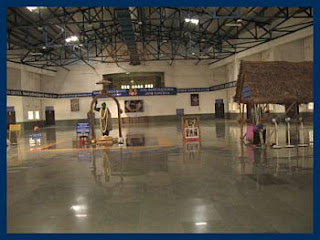Earth Day
April 22, 2007
"May there only be peaceful and cheerful Earth Days to come for our beautiful Spaceship Earth as it continues to spin and circle in frigid space with its warm and fragile cargo of animate life."
[United Nations Secretary-General U Thant, 1971

The equinoctial Earth Day is celebrated on the vernal equinox to mark the precise moment that spring begins in the Northern Hemisphere and autumn in the Southern Hemisphere. On equinox, night and day are in equal length anywhere on Earth. Therefore, a perfectly vertical pole standing on the equator at noon during equinox will not cast a shadow. At the South Pole, the sun sets and ends a six-month-long day while at the North Pole, the sun rises and hence ending six months of continuous darkness.
**********
"EARTH DAY uses one of humanity's great discoveries, the discovery of anniversaries by which, throughout time, human beings have kept their sorrows and their joys, their victories, their revelations and their obligations alive, for re-celebration and re-dedication another year, another decade, another century, another eon. EARTH DAY reminds the people of the world of the need for continuing care which is vital to Earth’s safety.
EARTH DAY draws on astronomical phenomena in a new way; using the vernal equinox, the time when the Sun crosses the equator making night and day of equal length in all parts of theEarth. To this point in the annual calendar, EARTH DAY attaches no local or divisive set of symbols, no statement of the truth or superiority of one way of life over another. But the selection of the March equinox makes planetary observance of a shared event possible.
"The vernal equinox calls on all mankind to recognize and respect Earth's beautiful systems of balance, between the presence of animals on land, the fish in the sea, birds in the air, mankind, water, air, and land. Most importantly there must always be awareness of the actions by people that can disturb this precious balance."
[Margaret Mead, [Anthropologist]
**********
Earth Awareness
Earth day, is also observed to inspire awareness of and appreciation for the Earth's environment and is nowadays observed by national governments in over 175 countries. Grassroots groups seek to make Earth Day into a day of action which changes human behavior and provokes policy changes. For more information visit:
http://www.earthsite.org/
Hoist the Sails
Four billion years ago
Our lonely Earth
Set sail on cosmic seas
Guided by an unseen hand
Of nature, God or chance.
As life evolved
Through endles eco-cycles
Man was born, destined
To destroy or enrich
the Precious Ship.
And now his hand
Has seized the tiller
But his ear has not
Yet caught the Captain's
Quiet command.
The sails are down, the ship becalmed,
Its fragile life at stake.
No longer do we ride the gentle swells of
Silent seas and breathe
The fragrant air.
Broken are the rhythms
Of our cyclic plants
And other living things.
But now the Captain speaks again
Our quiet thoughts at last reveal his voice.
"Hoist the sails, Earth Man.
Set them for celestial winds.
Hold the tiler firm,
The course ahead is clear."
Be He nature, God or chance
His voice is heard
And we shall heed
The Captain's quiet command.
[By John McConnell]



















































